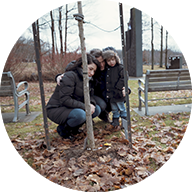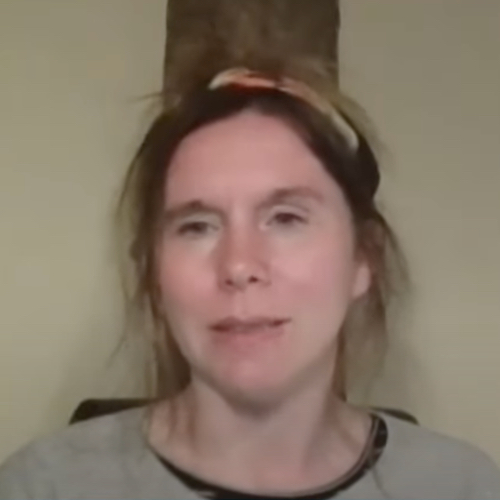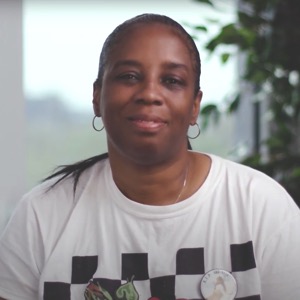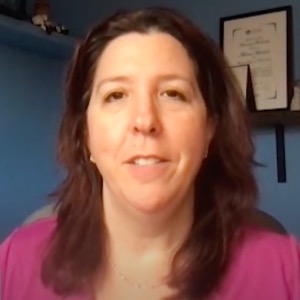We had a complicated delivery with our first son, Oliver. It started as a home birth and resulted in an emergency C-section in hospital. One year later, when we got pregnant with our second son, Benjamin, we were surprised that, despite our traumatic birth history, the recommended plan was VBAC (Vaginal Birth After Cesarean). The UK maternity approach follows a midwifery model for low risk women and, since we had a healthy pregnancy, we were not scheduled to see a doctor throughout our prenatal care. At 41 ½ weeks, with no signs of labour, we saw an obstetric consultant for the first time. We were told that a natural spontaneous labour with VBAC was still the safest route and we were encouraged to continue daily monitoring with our local midwives and return the following week for ultrasound. Our next appointment was booked for 42 weeks plus 1 day. We never made it.
At 42 weeks, we went for a third membrane sweep with our midwife hoping to stimulate labour. She monitored Benjamin’s heart rate and, after a noticeable deceleration, we were rushed to the hospital in an ambulance. His heart rate appeared to normalize, but since we were 2 weeks overdue, we needed to discuss intervention options. We decided to proceed with a cesarean which was scheduled for later that day. We were taken off monitoring and allowed to walk around the grounds. When we returned for our pre-op later that evening, we were told that an emergency C-section had come in, and our procedure had been rescheduled for the next day. Despite our protest, we were assured there were no risks to mother or baby and were advised to return home to get some rest. We were booked in for an “elective” cesarean the following morning. We never made it to that appointment either.
We arrived home at midnight. At 5 o’clock in the morning, something was wrong. Benjamin had stopped moving. We rushed back to the hospital. There was only a faint trace of a heartbeat and we immediately underwent an emergency C-section. Benjamin was born at 6:30am, having suffered Hypoxic Ischemic Encephalopathy (HIE), an injury that occurs when the brain doesn’t receive enough oxygen and blood. Benjamin was sent to the NICU where he was selected by lottery to participate in a highly-specialized trial of Xenon Gas and Cooling Therapy for babies with HIE.
Benjamin’s first MRI showed that the damage to his brain was relatively minor and localized. This meant that he might only have mild learning disabilities or physical impairments. Since the gas and cooling treatment was believed to prevent further brain damage, we eagerly awaited signs of improvement. Instead, Benjamin started having seizures. This was very concerning. We spent the next 24 hours by his side singing to him, reading stories, playing music, and caressing him. He never had another seizure, but the effects of the oxygen deprivation had taken its toll.
The second MRI revealed a devastating reality. Benjamin’s brain damage was extensive. We were told that he would be dependent on machines and would have no quality of life. On Day 5, with the generous guidance of the NICU team, we proceeded with “compassionate extubation,” allowing us the space and time to share our last moments with him. We washed him, dressed him, took him to the rooftop of the hospital and smudged him with Native American medicines. We laid him down between us in the designated holding space and fell asleep with him by our side. Benjamin gave us 8 hours to deepen our connection with him and fill our hearts with love. He died at 1 o’clock in the morning, just 5 days after his birth.
The following week, the Coroner ordered an inquest to investigate the decisions preceding Benjamin’s birth. For six months we examined the life-changing course of our maternity care and tried to reconcile that errors may have been made. We hoped the inquest would be an opportunity for the hospital to learn from their mistakes. In listening to medical staff give evidence before the Coroner, it became clear that transparency was lacking. The alarming discovery was the admission by a midwife who claimed she made a phone call to the Chief of Staff expressing concern about sending us home. There was no record of this call in written witness statements. The inquest was halted and an internal investigation was launched. It was confirmed that hospital staff tampered with evidence, but they were unable to provide an unequivocal account of what happened and why. No disciplinary action was taken and the inquest resumed. The most challenging part of the court proceedings was hearing testimonies that twisted the truth and characterized us as parents who rejected induction determined to have a natural birth. As the inquest came to a close, we hoped that the truth would prevail.
The Coroner ruled in our favour. We should not have been allowed to go that long post-term. We should not have been sent home that night. And we should not have been categorized as a low risk pregnancy. She made strong recommendations to help uphold the current guidelines of maternity care, which the hospital has now implemented. New measures have been introduced to ensure a more thorough consideration of VBAC pregnancies; post-term risks; and heart rate monitoring. Additionally, special attention has been given towards improved methods of documenting appointments, conversations and date deadlines.
We trust that valuable lessons have been learned and lives have been saved as a result. We believe that Benjamin’s death has changed the way things are done. And yet, we still have many unanswered questions and unresolved issues about the way in which our case was handled. We are left with an overwhelming desire for more transparency and accountability by medical professionals, despite the fear-based culture of litigation. We know that when mistakes remain unacknowledged, it is a missed opportunity to honour the patient and, more importantly, prevent those mistakes from happening again. We will continue to share our story in an effort to promote a wider conversation about patient safety. This is how we parent Benjamin. This is how we honour his legacy.







